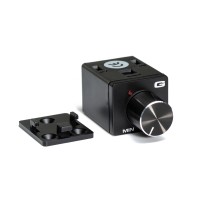Amplifier Mosconi Gladen ONE 1000.1 24V
1-channel, 1 x 600 into 4 Ω / 1 x 1000 W RMS into 2 Ω, class D, high-level input, 24 V
More about the product
More about the product
Amplifier Mosconi Gladen ONE 1000.1 24V
Are you thinking of buying a subwoofer for your car, but want to be sure of a quality monobloc? A safe bet is the 1-channel amplifier from Mosconi Gladen from the new ONE series. Built-in High/Low adapter with Auto Sense function and a stunning output of 1000 real watts RMS into 2 ohms. Attention - for vehicles with 24V on-board voltage!Key features of the Mosconi Gladen ONE 1000.1 24V car amplifier
- The possibility of any attachment, multiple attachments on the side offer flexibility during assembly.
- High power 1000 W RMS.
- For vehicles with 24 V on-board voltage.
- Class D.
- Improved DC-DC converter.
- Phase shift 0 - 360°.
- Built-in fan for active cooling of the amplifier.
- Power surge protection.
- More SMD components / less "traditional" components.
- Built-in High/Low adapter with automatic input signal recognition function.
- Made in Italy.
| Catalog number | ONE 1000.1 24V |
| Brand | Mosconi Gladen |
| Links | Official web presentation |
Product comments
Evaluation
ask us



















